14 Traditional Sarees from Different States of Bharat
As a fashion enthusiast from the vibrant land of India, I’m thrilled to take you on a mesmerizing journey through the diverse and exquisite world of Indian sarees. The saree, a garment that dates back millennia, is not just a piece of clothing but a symbol of our rich cultural heritage. Each region in India offers a unique saree style, mirroring its history, art, and traditions. Let’s unravel these beautiful stories woven in silk, cotton, and threads of gold.
1. Banarasi Silk Saree – Uttar Pradesh:
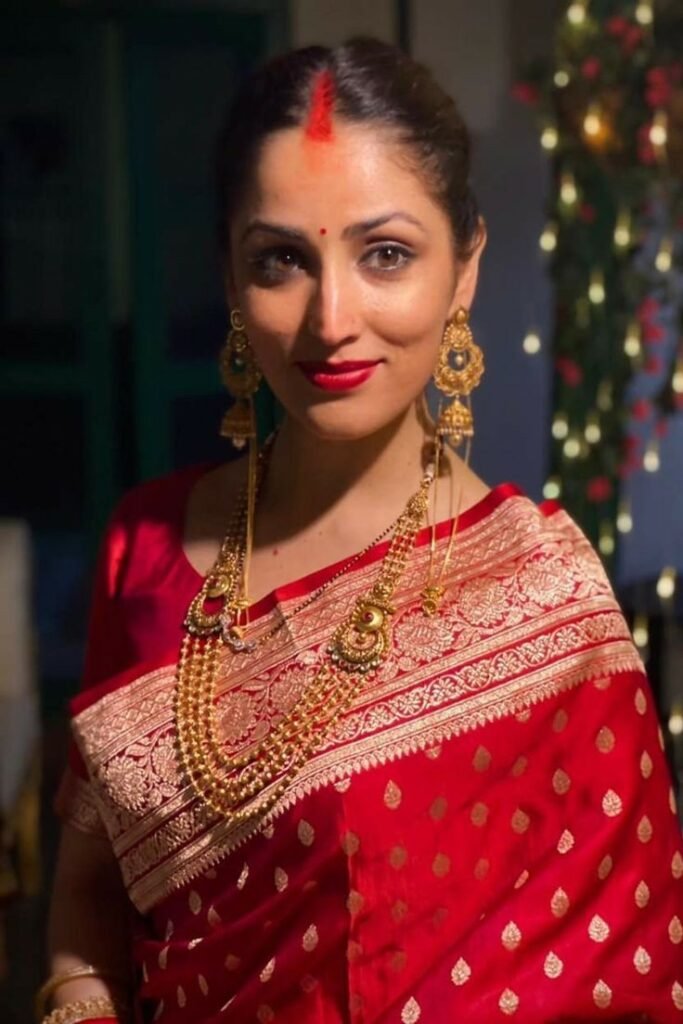
In the ancient city of Varanasi, the Banarasi Silk saree reigns supreme. These sarees are synonymous with luxury, woven with gold and silver brocade and enriched with intricate designs. Originally crafted exclusively for royalty, each Banarasi saree can take from 15 days to six months to complete, making it a priceless possession for any wardrobe.
2. Kanjivaram Silk Saree – Tamil Nadu:
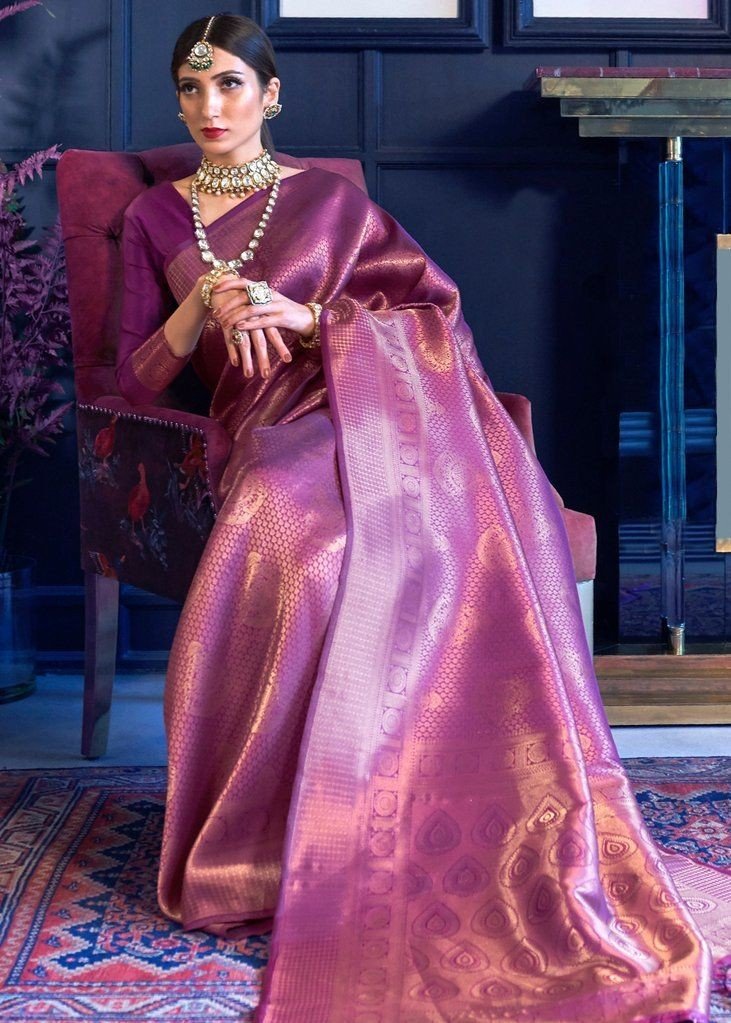
Down south in Tamil Nadu, the Kanjivaram Silk sarees are treasured for their vibrant colors and majestic presence. Originating from the town of Kanchipuram, these sarees are distinguished by their wide contrast borders and gold-dipped silver thread work. A Kanjivaram saree is not just a garment; it’s a handwoven dream in silk.
3. Lal Paar Saree – West Bengal:
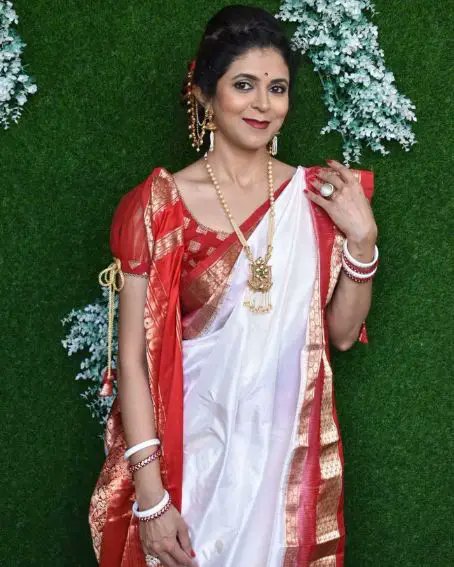
From the cultural heart of West Bengal, the Lal Paar saree is a traditional favorite, especially during Durga Puja. The classic red border on a white or off-white saree is a symbol of Bengali elegance. These sarees often feature artistic motifs and are a testament to the simplicity and grace of Bengali women.
4. Kasavu Silk Saree – Kerala:
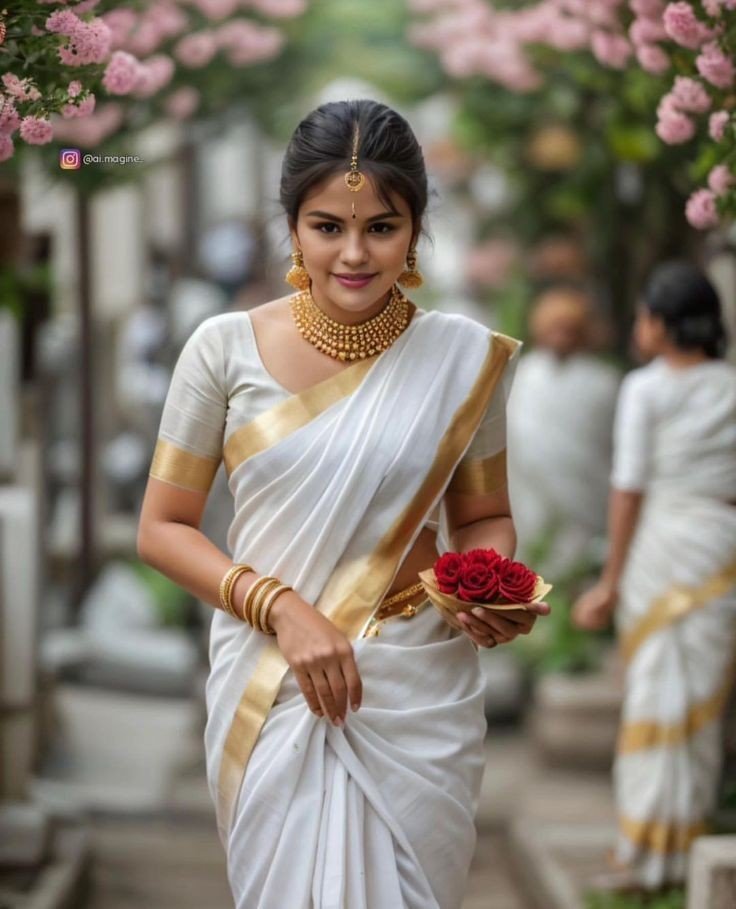
The Kasavu saree from Kerala is a reflection of the state’s serene beauty. Characterized by its cream or white body and golden border, this saree is a symbol of purity and tradition. Originally worn for religious occasions, the Kasavu has now found its way into the modern woman’s wardrobe.
5. Pochampally Silk Saree – Telangana:

Telangana’s pride, the Pochampally saree, is renowned for its Ikat weaving technique. These sarees are known for their geometric patterns and the unique method of dyeing the threads before they are woven. Each Pochampally saree is a canvas of vibrant colors and intricate designs.
6. Bomkai Silk Saree – Odisha:

The Bomkai sarees, or Sonepuri sarees, from Odisha are a harmonious blend of intricate thread work and traditional motifs inspired by nature and local folklore. These sarees are known for their exquisite craftsmanship and are a favorite for festive occasions.
7. Bandhani Saree – Gujarat:
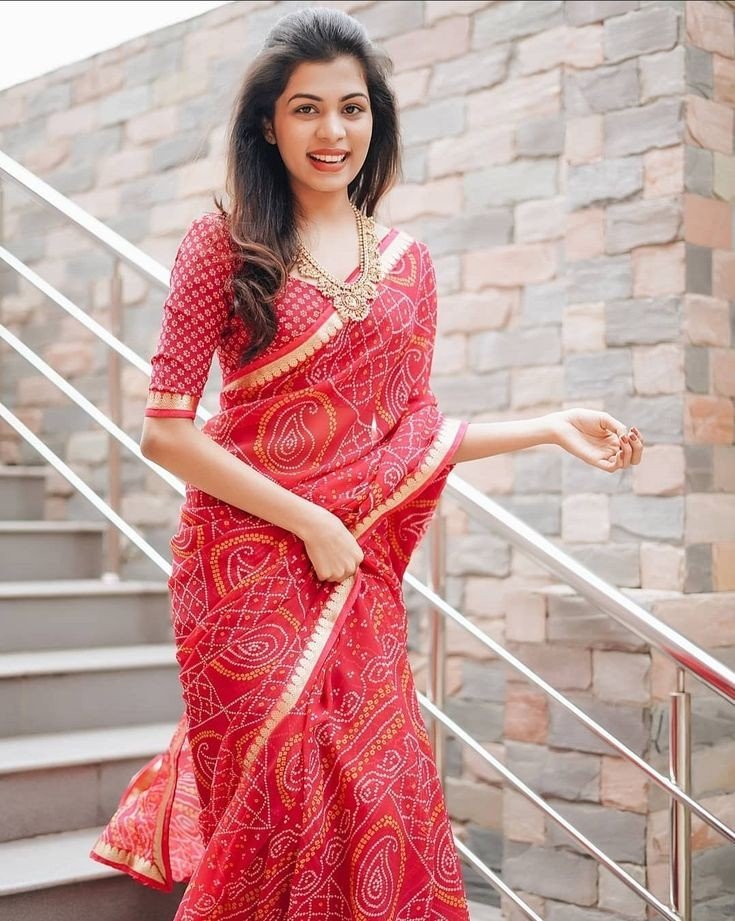
The art of Bandhani or tie-dye finds its most beautiful expression in Gujarat’s Bandhani sarees. These sarees are a riot of colors, created by plucking the cloth with fingernails into many tiny bindings to form a variety of symbols including dots, squares, waves, and strips.
8. Ghatchola Saree – Rajasthan:
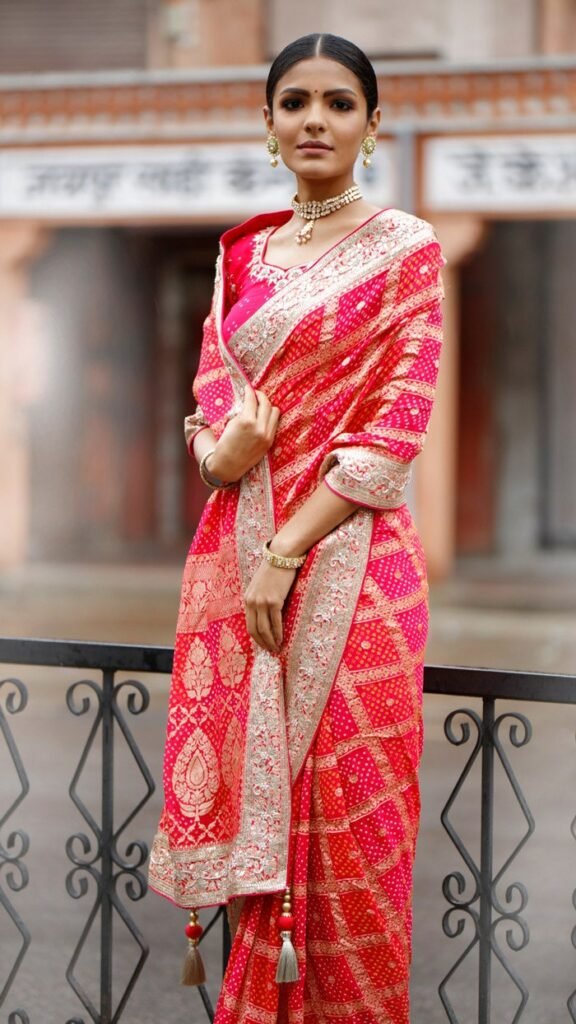
The Ghatchola sarees from Rajasthan are a testament to the state’s rich cultural fusion. Known for their grid patterns and Bandhani work, these sarees are traditionally red and green and are often worn by brides.
9. Gadwal Saree – Telangana:
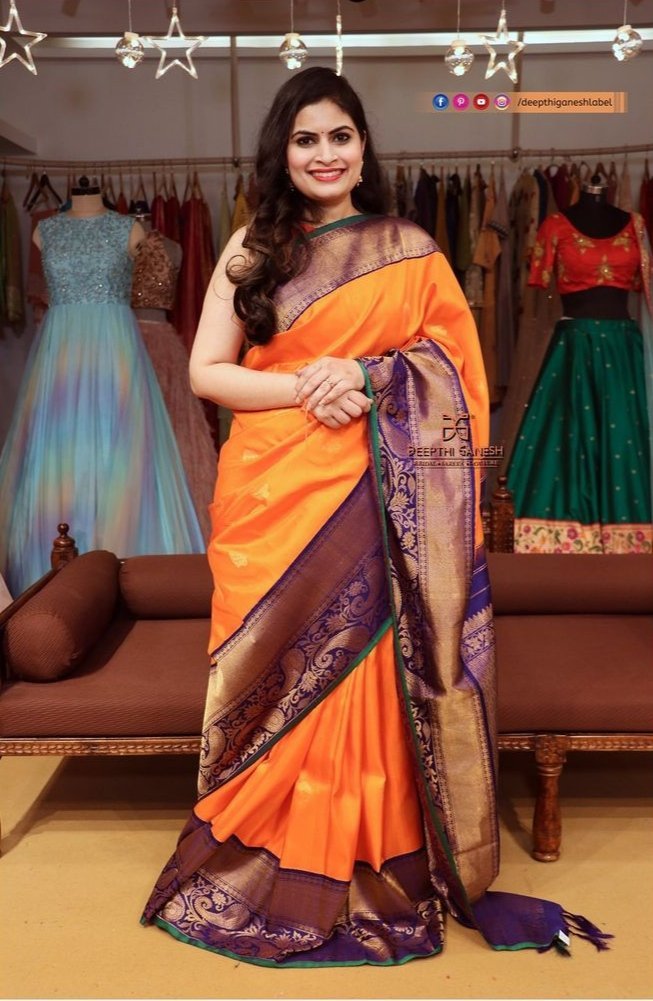
Gadwal sarees are the pride of Telangana. Renowned for their rich zari borders and cotton body, these sarees are cherished for their durability and elegance. The combination of cotton and silk in Gadwal sarees makes them perfect for both grand events and everyday elegance.
10. Chanderi Silk Saree – Madhya Pradesh:
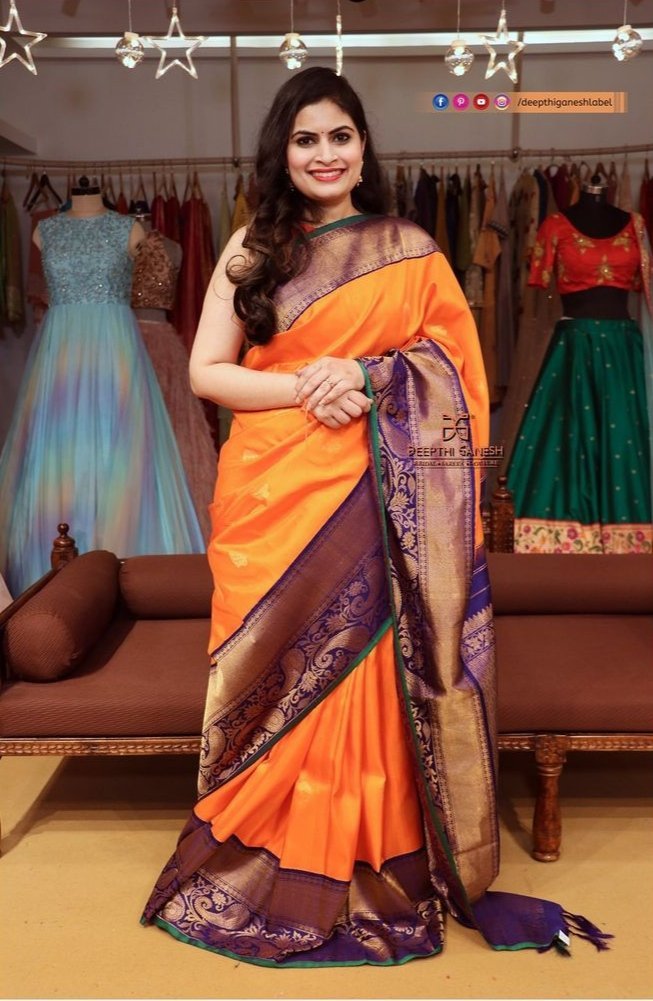
Hailing from Madhya Pradesh, the Chanderi Silk sarees are known for their lightweight, sheer texture and luxurious feel. These sarees are adorned with fine zari work and intricate motifs, making them a blend of tradition and contemporary fashion.
11. Nauvari Saree – Maharashtra:
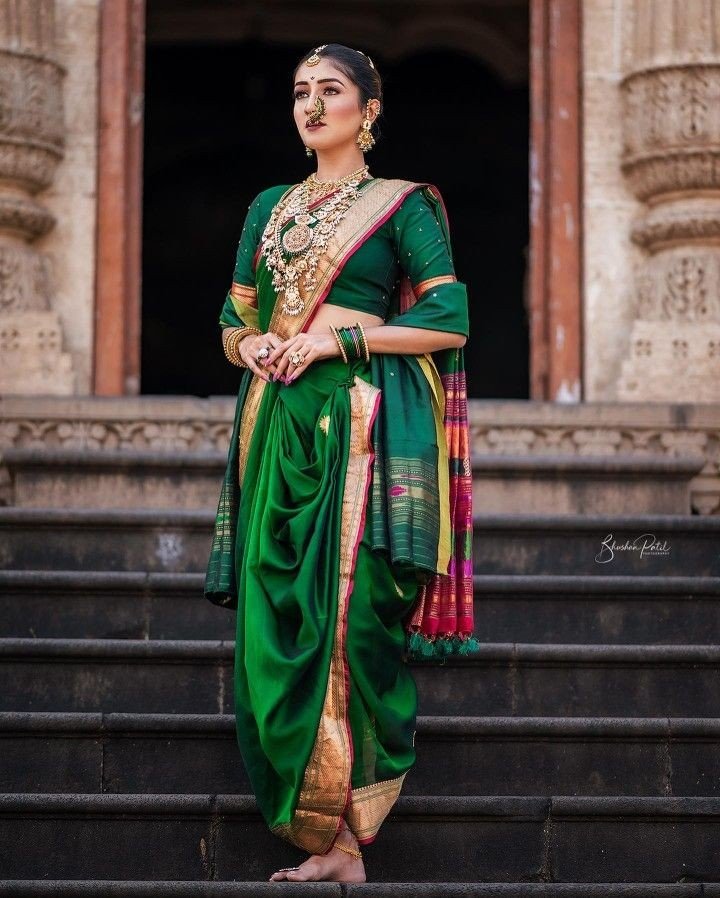
The Nauvari saree of Maharashtra is unique, mirroring the state’s history. Resembling a dhoti, this saree is draped in a manner that allows greater freedom of movement, reflecting the spirit of the Marathi women. It’s an emblem of their strength and cultural identity.
12. Muga Saree – Assam:
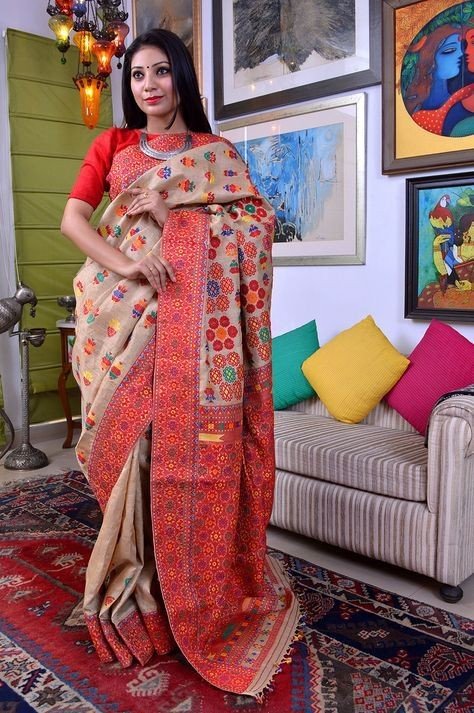
Assam’s Muga sarees are woven from a rare silk that is exclusive to this region. The golden sheen of Muga silk intensifies with each wash, making these sarees a legacy to be passed down through generations. They embody the natural beauty and rich heritage of Assam.
13. Phulkari Saree – Punjab:
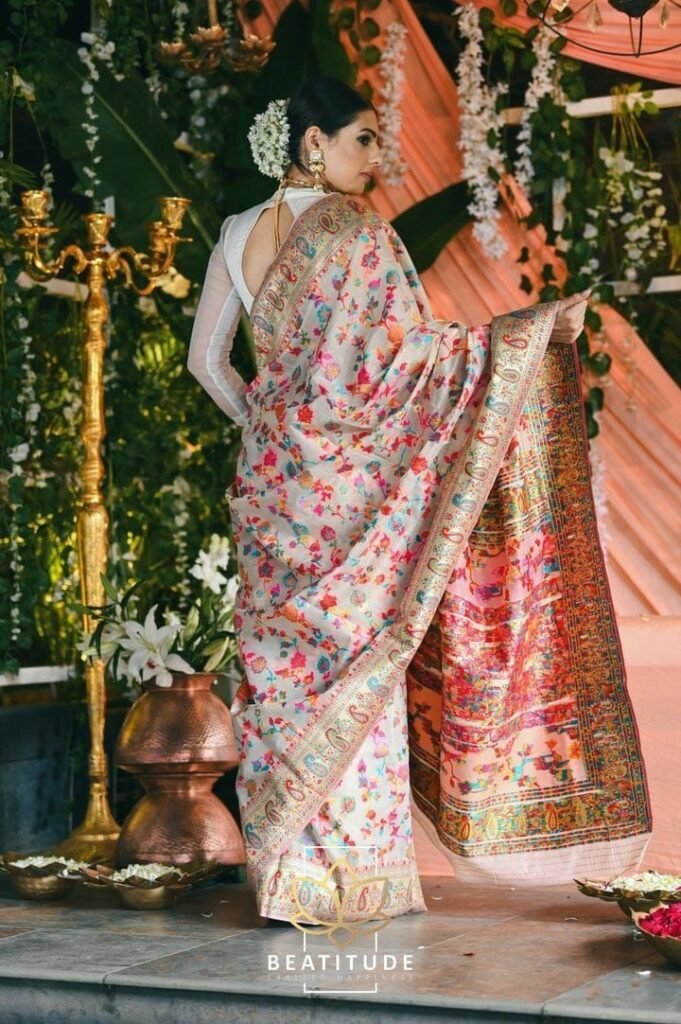
Phulkari, meaning ‘flower work’, is a traditional Punjabi embroidery that adorns the Phulkari sarees. Made with floss silk thread, these sarees are vibrant and are often part of a bride’s trousseau, symbolizing happiness and prosperity.
14. Chikankari Saree – Uttar Pradesh:
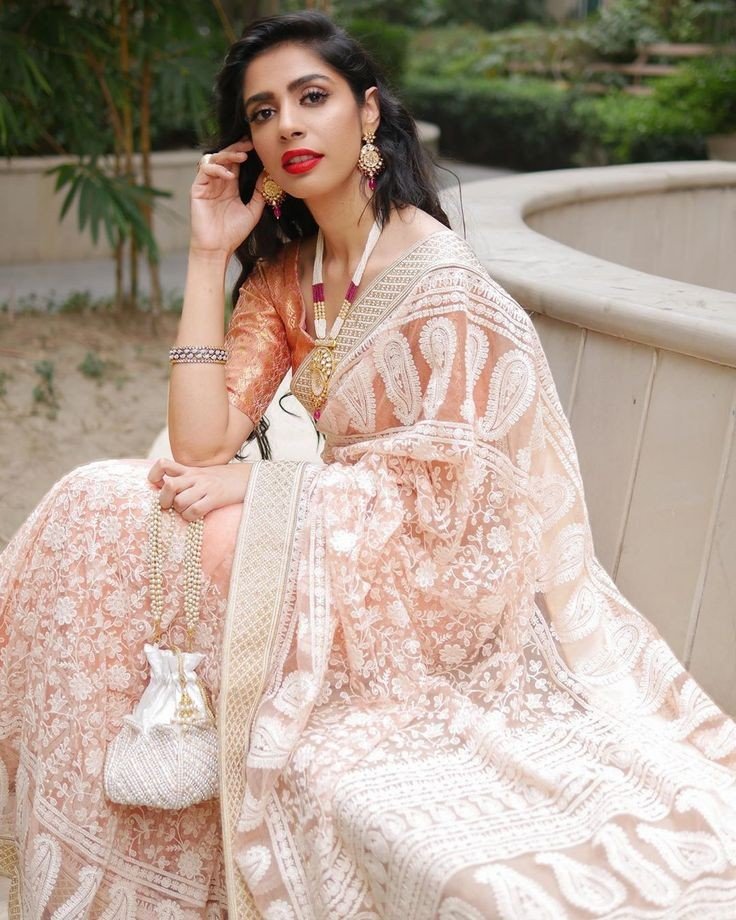
Chikankari sarees from Lucknow are poetry in fabric. This delicate hand embroidery, traditionally done on muslin cloth, is now a popular adornment on various fabrics. Chikankari sarees are a testament to the skill and patience of the artisans.
Conclusion:
In India, every state has its unique saree that tells the story of its people, their art, and their traditions. These sarees are not just garments; they are a legacy, a piece of art, and an integral part of our cultural fabric.
As we wrap up this colorful journey, I hope it has ignited a passion in you to explore and appreciate these diverse and stunning expressions of Indian craftsmanship.




